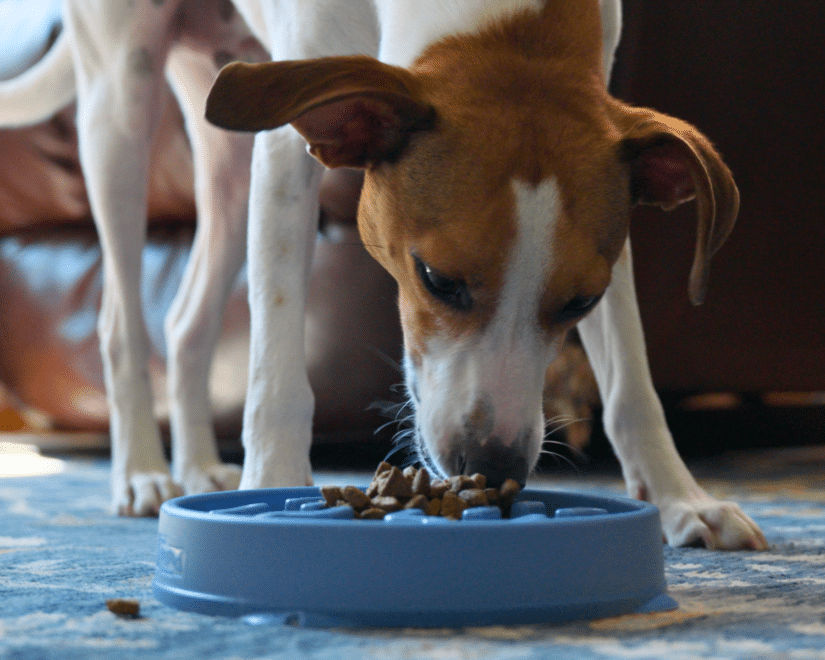As pet owners, we all want the best for our furry friends, and feeding them a nutritious, balanced diet is crucial for their well-being. American pet owners spend nearly $60 billion a year on pet food. Owners have many pet food options, and flashy packaging, commercials and marketing jargon can make the decision overwhelming.
But What Is the Best Diet for Your Dog?
It’s not a simple black-and-white answer. Factors like your dog’s age, breed, existing health conditions, activity level, environment, preferences, and your budget all play a role in selecting their food.
Making an Informed Decision
It’s essential to look beyond the marketing and understand the nutritional needs of your dog. Dogs are omnivores, meaning they can eat meat and plants to meet their nutritional needs, if the sources are of good quality and highly digestible. Dogs need a combination of amino acids as protein, essential fatty acids from fats, carbohydrates from recognizable whole foods, vitamins, minerals, and water.
Scientific research by veterinary nutritionists shows the minimum nutrient requirements necessary for optimal health at various life stages. These minimum standards have been established by the Association of American Feed Control Officials (AAFCO). Commercially prepared diets recognized by AAFCO reflect the minimum amounts of protein and fat and maximums for water and fiber. When buying pet food, it’s essential to read the label and ensure that it’s backed by AAFCO standards. Information regarding specific levels of nutrients found in various dog food should be readily available from the manufacturers.
Quality Matters
The quality and source of ingredients in pet foods matter. Reputable manufacturers invest in research, formulation, and feeding trials to ensure their diets meet high standards of digestibility.
Different Dogs Have Different Needs
Different dogs have different energy requirements. Puppies, nursing mothers, dogs recovering from procedures and working dogs typically need higher energy diets. Senior dogs need fewer calories but still require specific nutrients. A diet labeled for senior dogs should contain lower calories, higher protein, lower carbohydrates, pre and probiotics, and certain fatty acids and antioxidants to address issues associated with aging. Consulting your veterinarian is crucial to determine your pet’s specific nutritional needs. For most adult dogs, two measured meals a day is optimal.
Dry vs. Wet Food
Both dry and wet commercial diets can provide balanced nutrition. Dry food is generally more budget-friendly and convenient, while wet food can increase sensory appeal and provide hydration. Some dry foods are also formulated to mechanically remove dental tartar.
Alternative Diets
While some dogs may benefit from a home-cooked diet, it’s essential to ensure that essential vitamins and minerals are added. Pets with food allergies may benefit from home cooking, though only under veterinary supervision and with appropriate supplementation. Bland diets such as chicken and rice can be fed for short-term digestive upset, though it is not a complete and balanced meal. Transitioning a pet from one diet to another requires slowly mixing foods for about a week.
Raw diets are not recommended due to the risk of bacterial contamination and nutrient imbalances. Consumption of these diets expose animals to bacteria and parasites such as Salmonella, E. Coli, and toxoplasmosis.
We know most pets fed a balanced, commercial diet that meets minimum standards do not need extra vitamin supplementation, though some dogs will need additional enzymes to promote digestion.
How Much Food Does Your Dog Need?
Overfeeding and high-fat diets can lead to obesity in pets, causing metabolic diseases like diabetes, joint strain, and respiratory issues. Treats should make up no more than 10% of your pet’s caloric intake. Apples, carrots, and blueberries are low-calorie, nutritious snacks.
When it comes to feeding your dog, your veterinarian is your best resource. Veterinary professionals use the formula: 30 x weight in kg (or pounds divided by 2.2) + 70 to calculate the daily caloric needs of a healthy, adult dog. But this is just one factor. Lifestyle and body condition score, breed, age, and metabolism are also considered.
With many options available in the market, prioritizing quality and nutritional value over fancy packaging and marketing is essential. Always consult your veterinarian to ensure your dog’s diet meets their specific needs.
View our Pet Wellness Videos for more expert pet advice.
At Pet Butler, we want you and your pet to live your best and healthiest lives, which is why we offer Pet Waste Removal and Pet Care services year-round. We offer weekly, bi-weekly, monthly, and one-time clean-up services to meet your schedule and needs.

